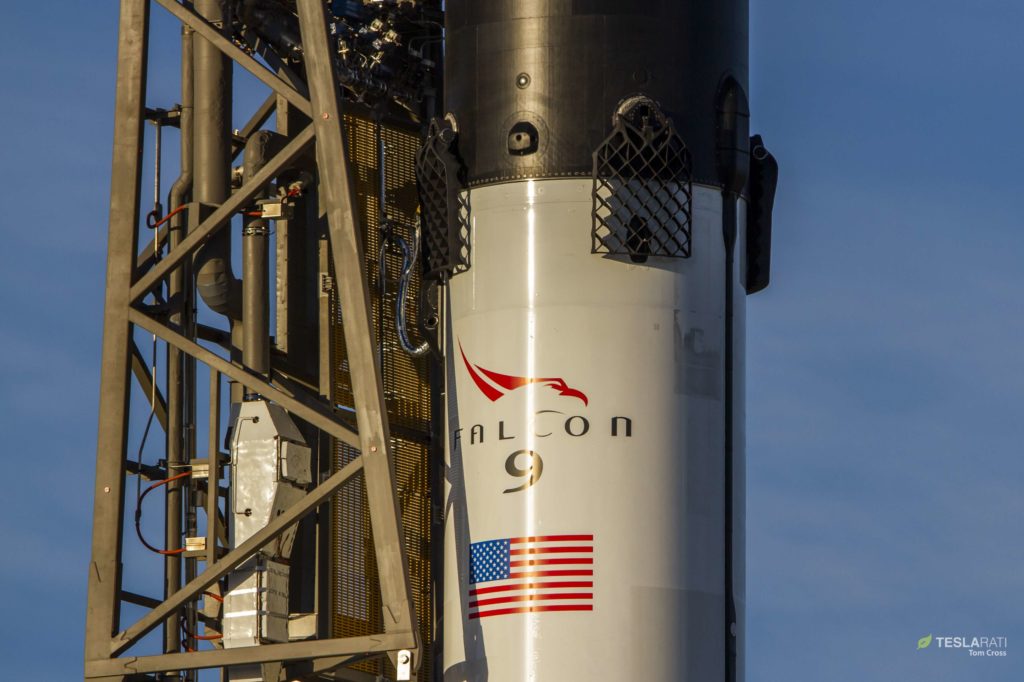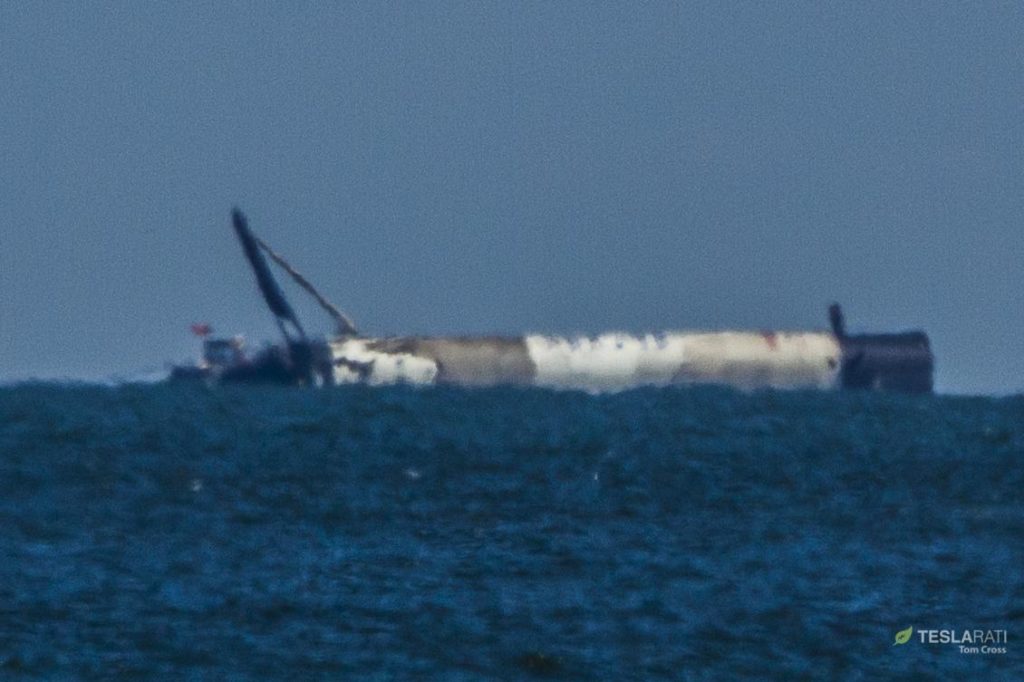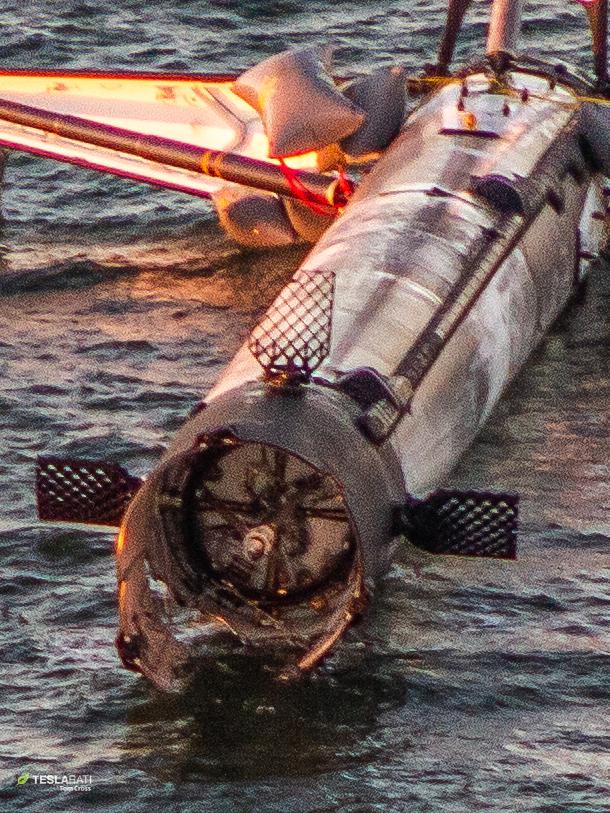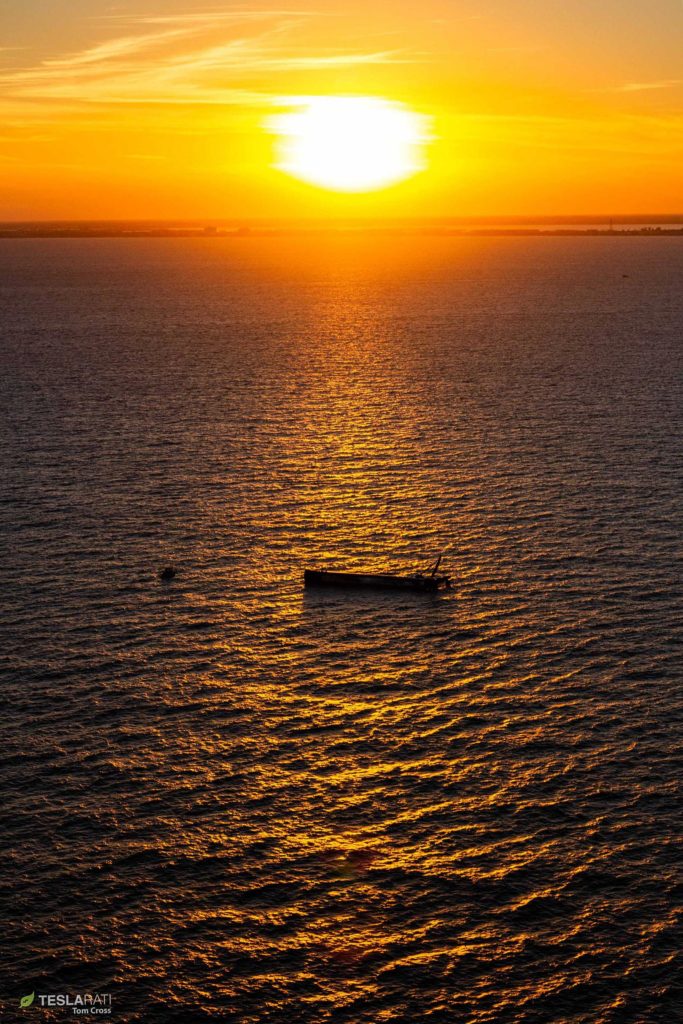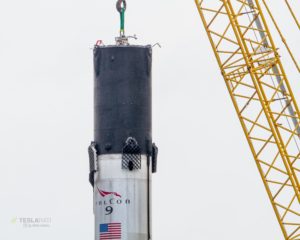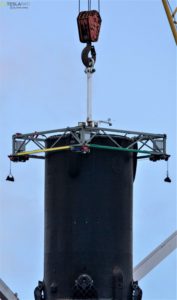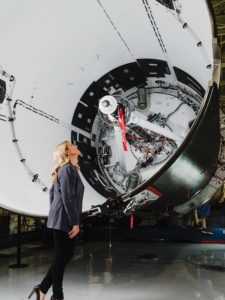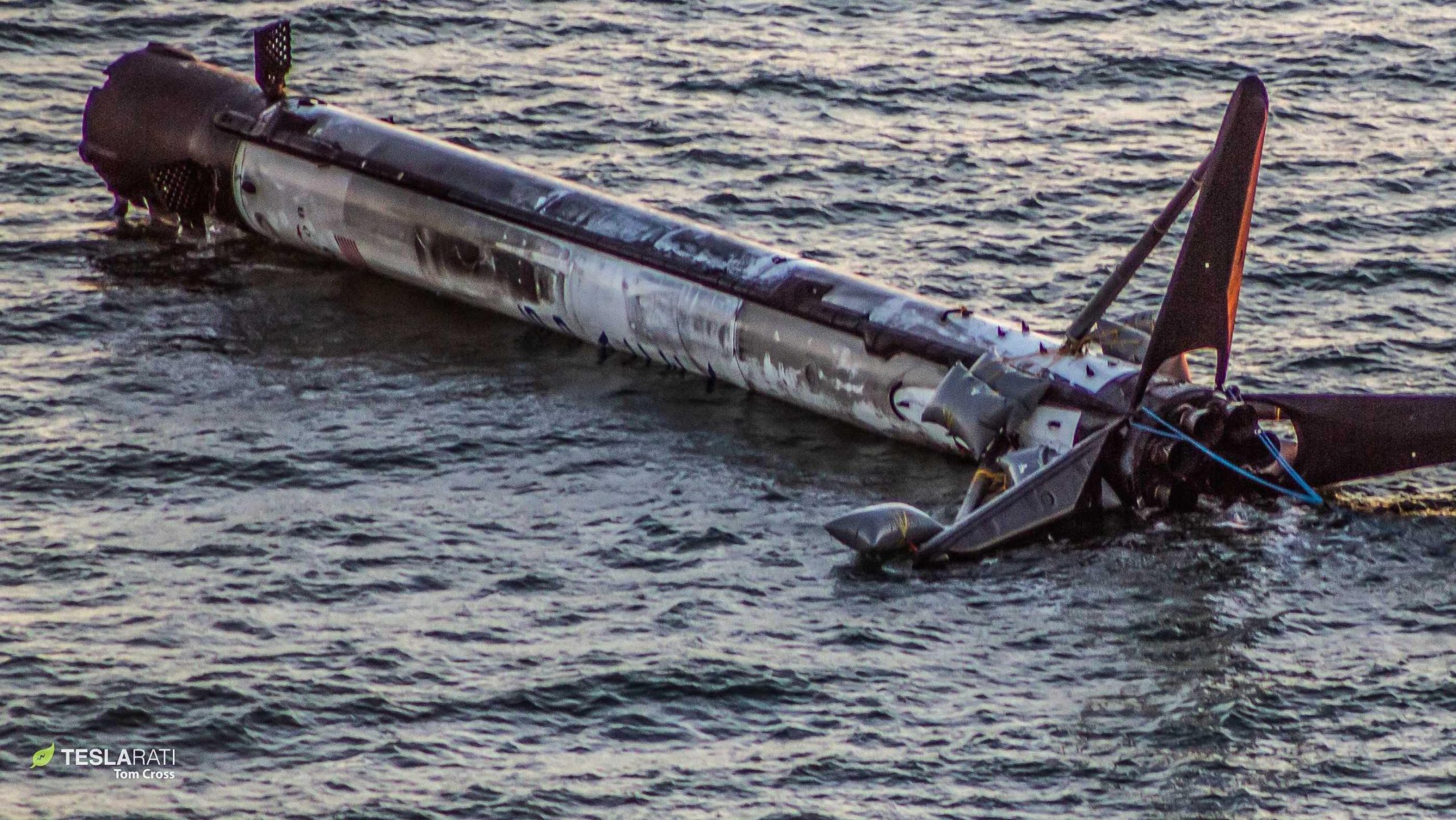
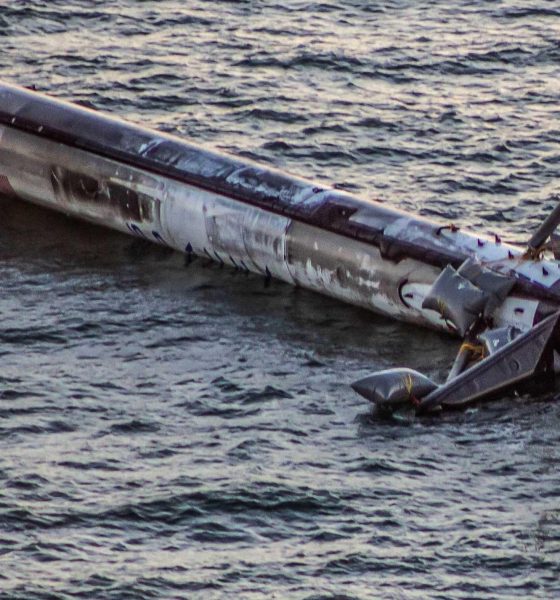
SpaceX
SpaceX’s first Falcon 9 Block 5 booster casualty battered but still intact in aerial photos
Shortly after successfully sending a reused Cargo Dragon spacecraft on its way towards the International Space Station (ISS), SpaceX Falcon 9 Block 5 booster B1050 experienced an anomaly with its grid fins during a planned landing, resulting in a shockingly soft (but unintentional) landing just off the Florida coast.
By some minor miracle, the drastically off-nominal loads experienced by the booster during its unintended departure from controlled flight somehow did not rise to the bar of structural failure. Nevertheless, now floating a handful of miles east of Port Canaveral’s mouth, B1050 did not make it through the ordeal unscathed.
https://twitter.com/_TomCross_/status/1070742919986991107
A little more than 24 hours after the booster found itself floating sideways in the Atlantic Ocean, B1050 had floated a solid ten miles south of its original position into waters and airspace that no longer fell under the purview of Cape Canaveral Air Force Station, technically a military outpost. As the captains of tugboat Eagle and SpaceX support vessel GO Quest discussed the logistics of returning the booster to port with the local harbormaster and US Coast Guard, Teslarati photographer Tom Cross chartered a local helicopter to get a slightly better view of the waterlogged rocket and its ad-hoc recovery operations.
A casualty of war (with the air)
Second only to the fact that the booster appears to be in disproportionately good shape considering the circumstances, by far the most noteworthy feature of the newest addition to SpaceX’s marine fleet is the sheer damage suffered by B1050’s interstage, the black carbon fiber composite structure that topsFalcon 9 Block 5 boosters and hosts its grid fins and stage separation mechanism.
Revealed from an aerial perspective, it almost looks as if one side of the composite cylinder was smashed with a giant hammer, tearing off at least 20% of the entire interstage – including one of four titanium grid fins – while leaving another large segment hanging on by only partially-figurative carbon fiber threads.
- Falcon 9 B1050 is seen here shortly before launch with an intact interstage. (Tom Cross)
- B1050 viewed from Cocoa Beach. (Tom Cross)
- Falcon 9 B1050’s interstage, or what’s left of it. (Tom Cross)
- RIP grid fin. (Tom Cross)
It’s not 100% clear why B1050’s interstage was so readily destroyed but a narrative can certainly be drawn from the current public record. After its grid fins lost hydraulic power and became stuck at an extreme angle, B1050 almost immediately lost control and began rapidly and quite brutally spinning and flailing, tossed around as it hurtled through the air at supersonic speeds. Being a predominately smooth cylinder, Falcon 9’s first stage is inherently prone to rotation in the presence of high-velocity air currents, which is why its grid fins are an absolute necessity for maintaining control authority during in-atmosphere “flights”.
Engines stabilized rocket spin just in time, enabling an intact landing in water! Ships en route to rescue Falcon. pic.twitter.com/O3h8eCgGJ7
— Elon Musk (@elonmusk) December 5, 2018
In a show that will turn the stomach of anyone familiar with a rocket’s typically narrow load tolerances, Falcon 9 B1050 experienced extreme aerodynamic stresses during the worst of its uncontrolled tumble, to the extent that the entire booster and interstage can be seen visibly twisting at least 5 degrees left and right from the perspective of an onboard camera. In the video above, focus on the center of Falcon 9’s grid fins during the first and last 5-10 seconds to properly visualize the extreme forces at play.
It might look fairly innocent to the untrained eye, but keep in mind that Falcon 9’s interstage is no more than a couple of inches thick and is absolutely massive, stretching 3.7m (~12 ft) in diameter. Perhaps even more importantly, the damage to the interstage has almost without a doubt rendered it unusable from the perspective of SpaceX’s established methods of safely moving and manipulating Falcon 9 boosters.
- Technicians attach an older interstage-grabber to lift B1046 after its first recovery. (Tom Cross)
- One of SpaceX’s East Coast interstage jigs is pictured here atop B1049. (Tom Cross)
- A Falcon 9 Block 5 booster bares its interstage and pusher rod, offering a perfect illustration of its scale. (Bloomberg)
All of those methods rely on adapters that attach to the interstage to lift the rocket vertically or support part of its ~30-ton dry mass horizontally. Lacking a sound interstage, it’s now entirely unclear how SpaceX might go about getting B1050 onto land without damaging it further. In simpler terms, this bodes very, very badly for any plans to safely reuse B1050 in the near (or distant) future. After suffering loads that severely weakened and ultimately tore its interstage to pieces, it’s reasonable to assume that the rest of the rocket’s lithium-aluminum propellant tanks experienced stresses that are at least roughly comparable.
If that’s the case, perhaps the only real hope for B1050’s ‘reuse’ will be the recovery of certain subcomponents and miscellaneous parts that may have made it through the ordeal unscathed or with only minor damage. The three remaining titanium grid fins are a guaranteed recovery, while COPVs, cold gas thrusters, avionics boxes, and maybe even some of its nine Merlin 1D engines could be salvageable with some level of refurbishment.
In the meantime, the tentative plan right now is to two B1050 into Port Canaveral sometime after dawn tomorrow, either ending up at drone ship OCISLY’s berth or another less-developed section of the port.
For prompt updates, on-the-ground perspectives, and unique glimpses of SpaceX’s rocket recovery fleet check out our brand new LaunchPad and LandingZone newsletters!

Elon Musk
Elon Musk gives nod to SpaceX’s massive, previously impossible feat
It was the booster’s 30th flight, a scenario that seemed impossible before SpaceX became a dominant force in spaceflight.
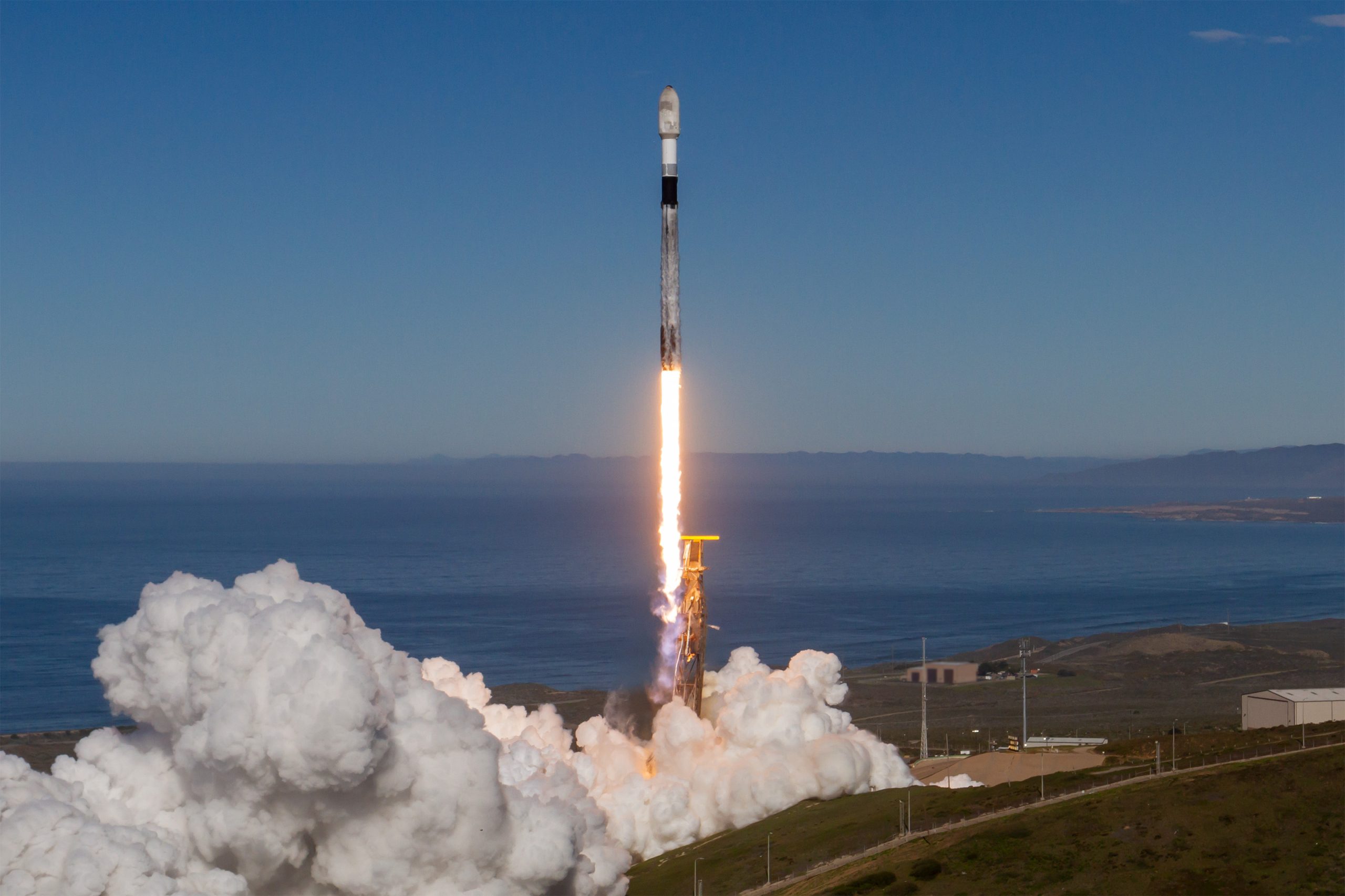
Elon Musk gave a nod to one of SpaceX’s most underrated feats today. Following the successful launch of the Transporter-15 mission, SpaceX seamlessly landed another Falcon 9 booster on a droneship in the middle of the ocean.
It was the booster’s 30th flight, a scenario that seemed impossible before SpaceX became a dominant force in spaceflight.
Elon Musk celebrates a veteran Falcon 9 booster’s feat
SpaceX completed another major milestone for its Smallsat Rideshare program on Friday, successfully launching and deploying 140 spacecraft aboard a Falcon 9 from Vandenberg Space Force Base. The mission, known as Transporter-15, lifted off two days later than planned after a scrub attributed to a ground systems issue, according to SpaceFlight Now. SpaceX confirmed that all payloads designed to separate from the rocket were deployed as planned.
The Falcon 9 used for this flight was booster B1071, one of SpaceX’s most heavily flown rockets. With its 30th mission completed, it becomes the second booster in SpaceX’s fleet to reach that milestone. B1071’s manifest includes five National Reconnaissance Office missions, NASA’s SWOT satellite, and several previous rideshare deployments, among others. Elon Musk celebrated the milestone on X, writing “30 flights of the same rocket!” in his post.
Skeptics once dismissed reusability as unfeasible
While rocket landings are routine for SpaceX today, that was not always the case. Industry veterans previously questioned whether reusable rockets could ever achieve meaningful cost savings or operational reliability, often citing the Space Shuttle’s partial reusability as evidence of failure.
In 2016, Orbital ATK’s Ben Goldberg argued during a panel that even if rockets could be reusable, they do not make a lot of sense. He took issue with Elon Musk’s claims at the time, Ars Technica reported, particularly when the SpaceX founder stated that fuel costs account for just a fraction of launch costs.
Goldberg noted that at most, studies showed only a 30% cost reduction for low-Earth orbit missions by using a reusable rocket. “You’re not going to get 100-fold. These numbers aren’t going to change by an order of magnitude. They’re just not. That’s the state of where we are today,” he said.
Former NASA official Dan Dumbacher, who oversaw the Space Launch System, expressed similar doubts in 2014, implying that if NASA couldn’t make full reusability viable, private firms like SpaceX faced steep odds.
Elon Musk
SpaceX’s Starship program is already bouncing back from Booster 18 fiasco
Just over a week since Booster 18 met its untimely end, SpaceX is now busy stacking Booster 19, and at a very rapid pace, too.
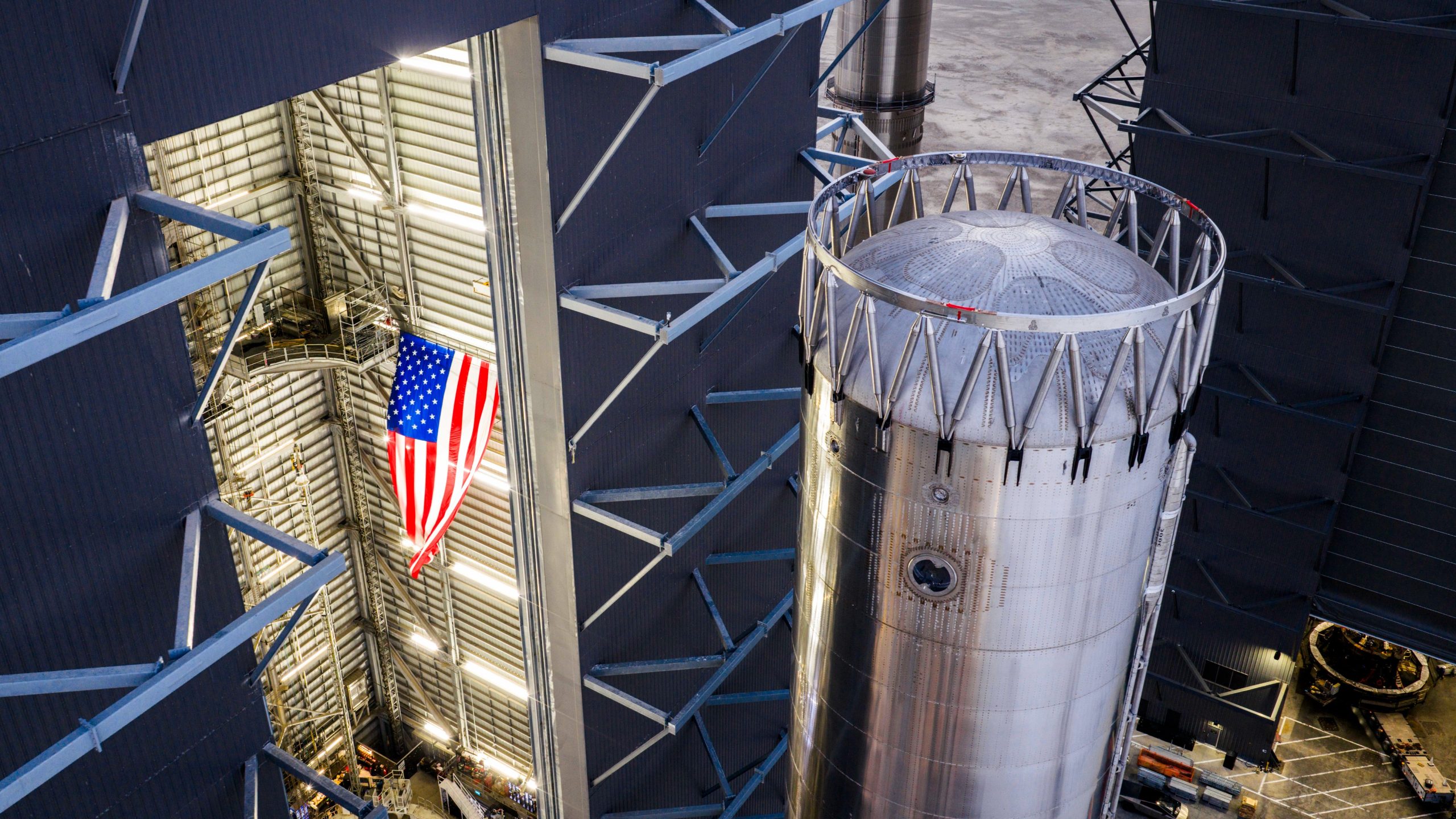
SpaceX is already bouncing back from the fiasco that it experienced during Starship Booster 18’s initial tests earlier this month.
Just over a week since Booster 18 met its untimely end, SpaceX is now busy stacking Booster 19, and at a very rapid pace, too.
Starship V3 Booster 19 is rising
As per Starbase watchers on X, SpaceX rolled out the fourth aft section of Booster 19 to Starbase’s MegaBay this weekend, stacking it to reach 15 rings tall with just a few sections remaining. This marks the fastest booster assembly to date at four sections in five days. This is quite impressive, and it bodes well for SpaceX’s Starship V3 program, which is expected to be a notable step up from the V2 program, which was retired after a flawless Flight 11.
Starship watcher TankWatchers noted the tempo on X, stating, “During the night the A4 section of Booster 19 rolled out to the MegaBay. With 4 sections in just 5 days, this is shaping up to be the fastest booster stack ever.” Fellow Starbase watcher TestFlight echoed the same sentiments. “Booster 19 is now 15 rings tall, with 3 aft sections remaining!” the space enthusiast wrote.
Aggressive targets despite Booster 18 fiasco
SpaceX’s V3 program encountered a speed bump earlier this month when Booster 18, just one day after rolling out into the factory, experienced a major anomaly during gas system pressure testing at SpaceX’s Massey facility in Starbase, Texas. While no propellant was loaded, no engines were installed, and no one was injured in the incident, the unexpected end of Booster 18 sparked speculation that the Starship V3 program could face delays.
Despite the Booster 18 fiasco, however, SpaceX announced that “Starship’s twelfth flight test remains targeted for the first quarter of 2026.” Elon Musk shared a similar timeline on X earlier this year, with the CEO stating that “ V3 is a massive upgrade from the current V2 and should be through production and testing by end of year, with heavy flight activity next year.”
Considering that Booster 19 seems to be moving through its production phases quickly, perhaps SpaceX’s Q1 2026 target for Flight 12 might indeed be more than feasible.
Elon Musk
Elon Musk shares SpaceX’s directive that destroys a prevalent media narrative
Musk’s comments followed Starlink’s initiatives for people affected by severe flooding in Indonesia and Cyclone Ditwah in Sri Lanka.
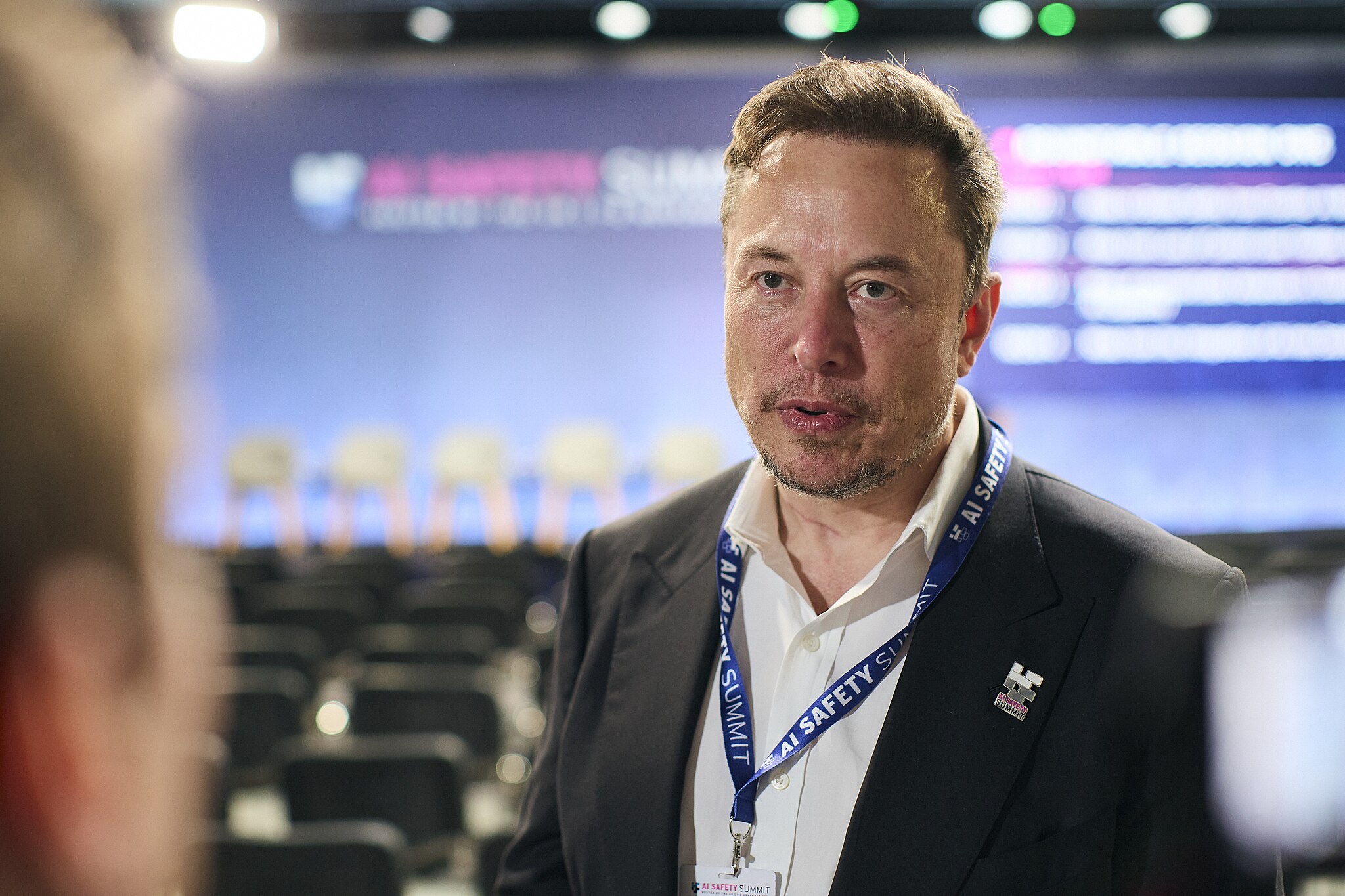
Elon Musk recently shared SpaceX’s standing policy to offer free Starlink service during natural disasters worldwide, highlighting the company’s commitment to pursue aid over profit during times of need.
Musk’s comments followed Starlink’s initiatives for people affected by severe flooding in Indonesia and Cyclone Ditwah in Sri Lanka.
Starlink activates free service in Indonesia and Sri Lanka
Starlink recently announced free service for those impacted by severe flooding in Indonesia’s Sumatra region, partnering with the government to deploy terminals rapidly to the hardest-hit areas. The offer extends to new and existing customers through December, restoring connectivity in zones where traditional networks have failed due to infrastructure damage.
Musk quoted the post on X, writing, “SpaceX standard policy is to make Starlink free whenever there is a natural disaster somewhere in the world. It would not be right to profit from misfortune.”
Starlink extended the same relief to Sri Lanka amid Cyclone Ditwah, coordinating with local authorities for additional support. The cyclone battered the island nation with heavy rains and winds, disrupting communications for thousands. Free access also lasts until year-end, emphasizing Starlink’s role in bridging gaps during crises.
“For those affected by the severe flooding in Indonesia and Sri Lanka in the aftermath of Cyclone Ditwah, Starlink is providing free service to new and existing customers through the end of December 2025. We’re also working with the Indonesian government to rapidly deploy terminals and restore connectivity to the hardest-hit areas on Sumatra, as well as with the Sri Lankan government to provide additional assistance,” Starlink wrote in a post on its official website.
Musk’s companies routinely provide aid
Musk’s firms have a track record of providing critical support in crises, often without fanfare, challenging portrayals of him as a comic book villain intent on enriching himself on the backs of a suffering populace. In January 2024 alone, Tesla opened Superchargers for free in Japan’s Hokuriku region after a magnitude 7.6 earthquake killed at least 55 and injured hundreds.
Similar efforts include Starlink deployments for the 2023 Maui wildfires, 2024 Hurricane Helene in North Carolina, and floods in Texas, where the service was used to help facilitate emergency coordination. These actions, which total millions in waived fees and logistics, demonstrate a proactive ethos among Musk’s companies, with Musk noting in past interviews that such aid stems from engineering solutions over optics.
The initiatives also provide a direct rebuttal of Musk’s characterization on mainstream media, which tends to lean negatively. This has become much more notable in recent years as Musk adopted more conservative policies. These negative sentiments came to a head earlier this year when Tesla stores, vehicles, and even some owners, were attacked during waves of anti-Tesla protests.

